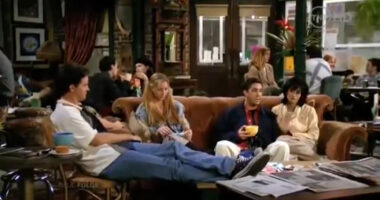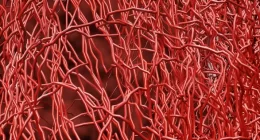
THE GOV website have issued 12 flood alerts for the UK today as Brits are set to be hit by wind blasts and snow this weekend.
The flood warnings are for: Earby Beck and Glusburn Beck; Exmoor Rivers; Lower Exe area; Lower River Soar in Leicestershire; Mid Bristol Avon area; Middle Exe area; Rivers Clyst and Culm and their tributaries; Rivers Duddon, Crake and Mill Beck; Severn Vyrnwy confluence; Somerset coast at Porlock Weir; Upper River Tamar and West Somerset Streams.
Brits are set to freeze this weekend with the mercury expected to drop at nighttime and snow falling in the north.
It comes after drivers were urged to stay alert on the roads on Friday with ice warnings covering half the country.
And the threat continues, particularly in Scotland, where there remains a high chance of ice patches throughout the country.
The Met Office said: “Early wintry showers in the north, and rain, sleet and hill snow further south will leave surfaces cold and wet by early evening.
“Clear spells for a time will allow ice to form in places, particularly for evening commuters, before temperatures trend up after midnight.
“The warning area highlights areas considered most likely to see ice.”
Read our weather live blog for the latest news and forecasts
-
Snow to hit Britain this weekend
Brits are set to freeze this weekend with the mercury expected to drop at nighttime and snow falling in the north.
It comes after drivers were urged to stay alert on the roads on Friday with ice warnings covering half the country.
And the threat continues, particularly in Scotland, where there remains a high chance of ice patches throughout the country.
BBC forecaster Christopher Blanchett said: “Through the course of this evening and overnight, our concern is with ice and there is a Met Office yellow warning in force through west-central Scotland and the south.
“There is a chance of icy patches almost anywhere and under clear skies, temperatures are readily falling away to sub-zero and in rural parts of the northeast perhaps minus 6C.”
-
Weather forecast for the new week
Outbreaks of rain spreading east Monday, southeast staying dry.
Brightening from the northwest Tuesday and Wednesday, but overnight fog patches.
Cloud and blustery showers in the north.
-
Today’s forecast
Early rain, heavy at times, clearing eastwards, finally clearing East Anglia and southeast England late afternoon.
Some early hill snow in the north.
Brighter, colder weather with heavy, blustery showers, wintry over hills, follows from the west. Windy and blustery.
-
Cold weather payments
Here is the full list of postcodes that qualify for the payments.
Aviemore
- AB37
- IV13
- PH19-26
Braemar
- AB35-36
- PH10-11
- PH18
Aboyne
- AB30-34
- AB38
- AB51-55
- DD8-9
Loch Glascarnoch
- IV4
- IV6
- IV7
- IV14
- IV16
- IV23-24
- IV63
-
How to stay warm when outside
With the weather getting chillier and frostier, you’ll want to wrap up warm.
Here are some good tips for staying all snugly and cosy when outdoors:
- Prewarm your clothes.
- Invest in some quality thermals.
- Fleece leggings.
- Hand warmers.
- Cover every inch of skin.
- Eat fatty foods.
- Thermal flask.
- Keep moving.
- Keep hydrated.
- Keep your head covered.
- Tactical scarf-wearing – including keeping your nose and mouth covered
-
Those in Manchester will need to wrap up warm
Friday’s showers fading through the evening and winds easing.
A frost and some ice developing early in the night but becoming cloudier and milder through the early hours of Saturday as rain, heavy at times, moves in and winds strengthen.
Minimum temperature -3 °C.
-
It will be a freezing night for Edinburgh
Dry with clear skies and a widespread frost at first.
Then becoming cloudy with freshening winds and temperatures recovering.
Rain with snow on high ground spreading eastwards later tonight. Minimum temperature -3 °C.
-
22nd January to 5th February UK forecast
Conditions expected to remain broadly unsettled and changeable through this period with occasional spells of cold, wet and windy weather moving across from the Atlantic.
Western and northwestern parts likely to see the wettest and windiest conditions overall whilst eastern and southeastern parts probably seeing the most of any drier spells.
Temperatures likely to be slightly above average overall throughout, but there remains a possibility of short-lived colder spells.
Colder spells likely to bring a risk of snow at times, though mostly over high ground in the north.
Possibility that stronger systems will bring gales to western and northwestern areas throughout this period.
-
Cardiff forecast for this evening
Friday’s showers fading through the evening and winds easing.
A frost and some ice developing early in the night but becoming cloudier and milder from the west as rain spreads eastwards and winds pick up again.
Minimum temperature -2 °C.
-
Could be another frosty night for Londoners
Any residual showers will rapidly fade, leaving clear spells and allowing a slight frost to develop.
Cloud then quickly spreads east, followed by outbreaks of locally heavy rain after midnight.
Minimum temperature -1 °C.
-
12th to 21st January
High pressure is expected across southern and central parts of the UK at the start of this period, bringing settled conditions and light winds, though it’s likely to be rather cloudy in some areas.
Temperatures will be generally around average, but there is a risk of some colder nights with local frost and fog.
Spells of rain, drizzle and stronger winds are likely further north, with temperatures near to or slightly above average here.
Confidence decreases through the period, but a return to generally more unsettled conditions across the UK is likely later on, with western and northwestern parts expected to continue to see the wettest and windiest weather.
Temperatures likely to remain around average.
-
Cold weather payments
Here is the full list of postcodes that qualify for the payments.
Aviemore
- AB37
- IV13
- PH19-26
Braemar
- AB35-36
- PH10-11
- PH18
Aboyne
- AB30-34
- AB38
- AB51-55
- DD8-9
Loch Glascarnoch
- IV4
- IV6
- IV7
- IV14
- IV16
- IV23-24
- IV63
-
How to stay warm when outside
With the weather getting chillier and frostier, you’ll want to wrap up warm.
Here are some good tips for staying all snugly and cosy when outdoors:
- Prewarm your clothes.
- Invest in some quality thermals.
- Fleece leggings.
- Hand warmers.
- Cover every inch of skin.
- Eat fatty foods.
- Thermal flask.
- Keep moving.
- Keep hydrated.
- Keep your head covered.
- Tactical scarf-wearing – including keeping your nose and mouth covered
-
22nd January to 5th February UK forecast
Conditions expected to remain broadly unsettled and changeable through this period with occasional spells of cold, wet and windy weather moving across from the Atlantic.
Western and northwestern parts likely to see the wettest and windiest conditions overall whilst eastern and southeastern parts probably seeing the most of any drier spells.
Temperatures likely to be slightly above average overall throughout, but there remains a possibility of short-lived colder spells.
Colder spells likely to bring a risk of snow at times, though mostly over high ground in the north.
Possibility that stronger systems will bring gales to western and northwestern areas throughout this period.
-
Could be another frosty night for Londoners
Any residual showers will rapidly fade, leaving clear spells and allowing a slight frost to develop.
Cloud then quickly spreads east, followed by outbreaks of locally heavy rain after midnight.
Minimum temperature -1 °C.
-
12th to 21st January
High pressure is expected across southern and central parts of the UK at the start of this period, bringing settled conditions and light winds, though it’s likely to be rather cloudy in some areas.
Temperatures will be generally around average, but there is a risk of some colder nights with local frost and fog.
Spells of rain, drizzle and stronger winds are likely further north, with temperatures near to or slightly above average here.
Confidence decreases through the period, but a return to generally more unsettled conditions across the UK is likely later on, with western and northwestern parts expected to continue to see the wettest and windiest weather.
Temperatures likely to remain around average.
-
Sunday to Tuesday outlook
Sunday dry and bright for many areas, although blustery showers in the northwest.
Cloud and rain reaching all areas through Monday, clearing southeast, and brightening from the northwest through Tuesday.
-
Drivers could be fined of £100 for wearing the wrong shoes when it snows
Thicker boots may keep your feet warm in the snow but they could get you into trouble and you with a heavy fine if you drive in them.
While wearing inappropriate shoes to drive isn’t technically illegal, careless driving due to unsuitable footwear can get you into trouble.
Rule 97 of the Highway Code states that before heading off on a drive, you must ensure that “clothing and footwear do not prevent you using the controls in a correct manner”.
If you are stopped by the police for careless driving and they decide your footwear caused the problem, you can face up to a £100 on-the-spot fine plus penalty points on your licence.
If you do need heavier boots for snow or cold weather conditions when you’re out and about, it’s best to take an additional, safer pair of shoes to drive in too.
-
End of January outlook
Through the rest of January, a continuation of the rather changeable regime is expected with spells of wet and windy weather interspersed by drier, brighter periods.
Temperatures are likely to remain close to or slightly above average due to a mixture of mild spells and shorter-lived colder periods.
These shorter-lived colder periods may still allow for some snow, but this will typically fall over hills in the north.
Towards the end of this period, there is a tentative sign of more settled spells developing, particularly across the south which would increase the chance of overnight frost and fog here.
-
Three tips to know before driving in snow and ice
Driving expert Jack Cousens, head of roads policy at the AA, has some useful advice.
He said drivers must take it slow and leave plenty of space for the car ahead in case they skid off the road.
And with motorways expected to be busier than ever as Brits rush to celebrate a family Christmas for the first time in two years, staying out of danger is extremely important.
Here are Jack’s top tips:
- Make space, it’s not a race
- Slow and steady
- Beware of ‘black ice’
-
This month will see drop in temperatures, says Met Office expert
Met Office forecaster Craig Snell said the average temperature in December and the beginning of January is usually around 7C or 8C, with the warmer weather due to a south-westerly wind making its way across the country.
The higher temperatures are usually localised, but “plenty of places” have seen highs of 15C over December.
However, he added that January could see a drop in temperatures because of an Arctic chill sweeping through from next week.
-
This week will be feeling colder for all
Met Office forecasters warned: “Cold northerly air dives south across the whole of the UK with brisk winds.
“It’s feeling colder for all, especially in the wind.”
In the capital, temperatures will plummet by 10C, from 16C at the weekend to just 6C today.
Meteorologist Simon Partridge said we’re facing a “shock to the system” as the chilly winds make it feel as cold as -2C.
“It will definitely be colder, so if you’re going out, think about an extra layer,” he said.
“You might need anything to keep the wind out because it’s not going to be pretty.”
-
What is a Thundersnow?
It is essentially a thunderstorm in cold weather.
If it’s cold enough then instead of rain, the thunderstorms produce snow.
This, along with the usual thunder and lightning is called a thundersnow.
It is often very atmospheric.
Th snow dampens the sound of the thunder and reflects the lightning making it even brighter.
-
How cold does it have to get in order to be sent home?
There isn’t a set temperature where employers have to send their employees home because it’s too cold.
And since October 2012, there’s no minimum temperatures in English schools, either.
The School Premises (England) Regulations 2012 don’t specify a safe classroom temperature, although the National Education Union advises a minimum of 18C.
In the workplace, it’s the employer’s responsibility to ensure that the workplace has additional heating if the temperatures do get too cold.
Employers are recommended to include flexible working hours or rotas to help reduce the effects of a cold snap – but they don’t have to.
Kate Palmer, head of advisory at employment law consultancy Peninsula, told The Sun an employer has no obligation to pay an employee if they fail to turn up for work because:
- The weather is bad
- Public transport is not running
- They miss hours because they turned up late
Plus, employees do not have a legal right to be paid in the event they take an emergency day off with their children.
-
When is it too cold to go to work? (Continued…)
Employers are not required to pay employees if they cannot get to work in bad weather, according to government rights.
You could be asked to work from home, but if this isn’t possible you may be asked to take unpaid or annual leave.
In the workplace, the mercury shouldn’t dip below 16C and employers should try to increase temperature in the office or workplace.
The Health and Safety Executive (HSE) states that a workplace should provide “reasonable comfort”.
Its Workplace Regulations 1999 state employers should “assess risks to health and safety and act where necessary (i.e. if the workplace temperature drops below the minimum guideline or if it is felt the temperature is too high)”.









